
AMD Athlon 5350 (Kabini) Review
Manufacturer: AMDUK price (as reviewed): £40.72
US price (as reviewed): $63.99
There was some interesting news regarding AMD recently. Financially, it recorded some significant losses throughout 2013, which can arguably be traced all the way back to Intel's launch of its Core architecture and AMD's somewhat ill-fated Phenom. However, while it hasn't really clawed back any significant ground in the high performance desktop CPU market, the APU arena is a very different story.
The case for budget gaming systems is pretty strong, and Kaveri and Richland (think A10-7850K and A10-6800K) have strengthened the idea that there are playable frame rates to be had below your typical budget CPU and cheap discrete GPU setup.
AMD has seen enhanced sales of GPUs thanks to cryptocurrency mining (not forgetting that the company is also in a fairly equal fight with Nvidia when it comes to frame rates too), and it also has fingers in plenty of next-gen console pies. Its Q1 2014 net income of -$20m is actually a lot better than what we've seen recently - the same quarter last year, for example, saw its net income at -$146m.
Things are arguably looking up for AMD, then, and with Intel's inferior but ever-increasing graphics performance on its CPUs, with Kabini, AMD's latest APU, it is looking to cement its dominance at the extreme budget end of the market, and fend off competition from budget Intel CPUs.
Click to enlarge
So where exactly does Kabini fit in? Well, AMD wanted to be clear here - this isn't a 1080p gaming setup, nor is Kabini going to be competing with Pentiums or Core i3's in 2D performance stakes either. It's not even really a cut down version of Kaveri - Kabini is essentially a low power desktop version of its latest mobile and console-based silicon sporting up to four Jaguar cores along with a Radeon GPU portion - more on the technical side of things over the page.
As we reported here on the day of launch, Kabini is essentially AMD's answer to Intel's Bay Trail, which is found in some low-power Pentium, Celeron and Atom-based systems including NUCs amongst other things. Steam OS, HTPCs and generic budget systems all come into play here, especially as Kabini APUs also sport Radeon graphics, and this market is precisely what AMD is aiming at.
Click to enlarge
It's certainly lucrative given the sheer volumes involved, especially in the home/office PC side of things. However, something that's really raised some eyebrows is the cost of the APUs and indeed their counterpart Socket AM1 motherboards. The latter are currently available for as little as £20, and the top-end APU that we're looking at here today, the Athlon 5350, only costs £40 with the low-end Sempron 2650 retailing for just £24. Throw in a budget PSU, 4GB of RAM and a mini-ITX case such as Cooler Master's Elite 130, and you're looking at a complete base unit price of no more than £150 - something Intel simply cannot match, at least if you're buying up-to-date gear.
AMD has cited a need from developing countries for a low-cost offering and price-wise it's certainly met that, but where the new Socket AM1 also surprised us when we first heard about it, is that it's socketed - not embedded like its predecessors. The reason for this, again according to AMD, is to offer a modicum of future proofing for the new socket but also to allow some flexibility when it comes to hardware choice, even if at launch there are only four models to choose from.
| APU Model | Athlon 5350 | Athlon 5150 | Sempron 3850 | Sempron 2650 |
| CPU Frequency | 2.05GHz | 1.6GHz | 1.3GHz | 1.45GHz |
| GPU | Radeon R3 8400 | Radeon R3 8400 | Radeon R3 HD 8280 | Radeon R3 HD 8240 |
| GCN Radeon Cores | 128 | 128 | 128 | 128 |
| GPU Frequency | 600MHz | 600MHz | 450MHz | 400MHz |
| Maximum memory speed | 1,600MHz | 1,600MHz | 1,600MHz | 1,333MHz |
| Total Cache | 2MB | 2MB | 2MB | 1MB |
| TDP | 25W | 25W | 25W | 25W |

MSI MPG Velox 100R Chassis Review
October 14 2021 | 15:04

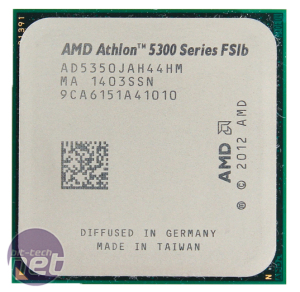
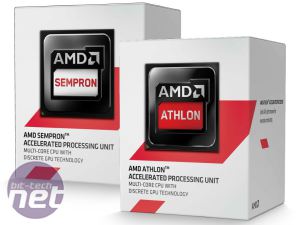
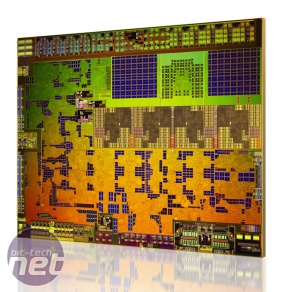
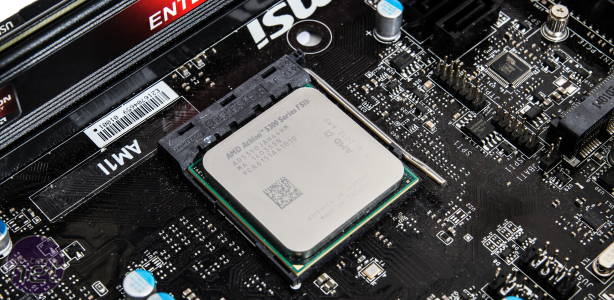
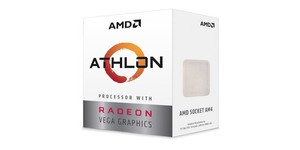






Want to comment? Please log in.